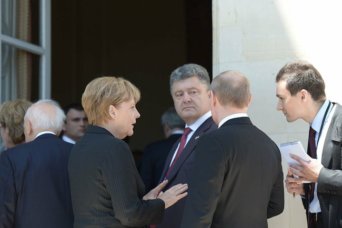- About
- Topics
- Story
- In-Depth
- Picks
- Opinion
- News
- Donate
- Signup for our newsletterOur Editors' Best Picks.Send
Read, Debate: Engage.
What actions are wrong, which are right to finish the crisis between Ukraine and Russia?
"Our core responsibility is to keep our nations safe, and that is exactly what we are doing," said Nato chief Jens Stoltenberg at a meeting of the Nato defence ministers yesterday. But already more than 5,000 people have been killed in eastern Ukraine and clashes have worsened in recent weeks.
The Ukraine crisis looms and the Nato readjusts. It is planed to bolster the alliance's military presence in Eastern Europe in response to increased fighting in eastern Ukraine between government forces and pro-Russia rebels. Specifically, this means: Six bases are being set up and a 5,000-strong "spearhead" is going to be established. Stoltenberg explained, the steps are being taken in response to the "changed security environment".
“Nato sees its actions as entirely defensive - but this is not the way they will be seen in Moscow. Indeed their fundamentally different perceptions of the Ukraine crisis is what is driving the wider rift between Russia and the West”, according to Jonathan Marcus, BBC diplomatic correspondent.
“Nato's wider actions - it also plans to open a training centre in Georgia and support for the reform of Ukraine's military - all ring alarm bells in Moscow.”
Meanwhile the tensions between Putin and the US or other Nato allies could get worse by continuing to arm the Ukrainian military, German Chancellor Merkel and French President Hollande travel to Kiev and Moscow to conciliate in the Ukraine crisis. But what can the two actually achieve? It looks like a “mission for hope” of two European leaders to refloat negotiations for a ceasefire. Although Russia and Ukrain had already agreed a plan for de-escalation in Belarus last autumn. However, the so-called Minsk agreement was never realized.
Anyway, EU diplomats said that Merkel would not be going to Moscow if she did not believe Putin was now ready to make a deal.
